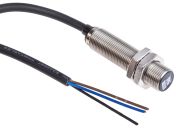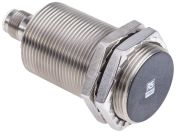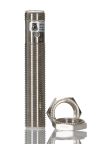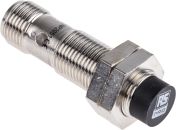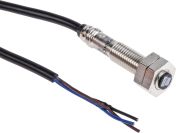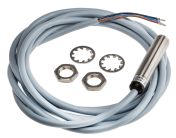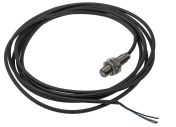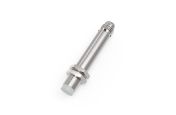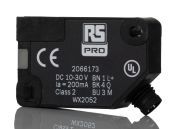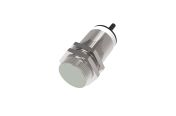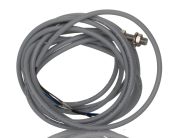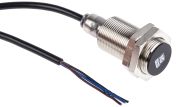Proximity Sensors
A proximity sensor is a non-contact component, designed to detect the presence or absence of a nearby object without any physical contact. Due to their non-contact nature, they are ideal for working with unstable or delicate objects that could otherwise be damaged by touch.
Proximity sensors work by detecting a change in the electromagnetic field or return signal, referred to as a target. Different sensors are used depending on the specific target being identified. Proximity sensors have a prolonged lifespan as they work on a non-contact basis. You can find out more here in our useful guide to proximity sensors.
Types of Proximity Sensors
- Capacitive Proximity Sensors: Capacitive sensors can detect various shapes and materials, even through non-metallic walls. They are suitable for use with conductive and non-conductive materials and are found in applications with close-range tasks such as touchscreens, liquid level detection and the detection of objects.
- Inductive Proximity Sensors: Inductive proximity sensors can detect the presence or absence of metallic objects without physical contact. They do this by generating an electromagnetic field through an oscillating circuit. Any ferrous metal object, including aluminium, copper, brass, and iron, trigger a change in the output signal, which indicates the presence of a metallic object. They are robust and suitable for using in harsh environments. Commonly used in applications such as metal detecting, position sensing, as well as automation.
- Ultrasonic Proximity Sensors: Ultrasonic sensors emit and receive high-frequency sound waves that can be reflected or absorbed by objects within their range. These sensors are ideal for high-speed and long-distance measurements, such as wind speed, fluid level, and speed through air or water. As well as being used for distance measurement, they are also used for presence detection and obstacle avoidance.
Browse our extensive range of high-quality Proximity Sensors from industry-leading brands such as SICK ifm electronic Telemecanique Sensors Pepperl + Fuchs and RS PRO
Order Today for quick and easy delivery
Popular Searches
Related links
- A Complete Guide to Proximity Sensors
- Proximity Sensor ICs
- RS PRO Capacitive Threaded Barrel Proximity Sensor 5 mm Detection 20 → 250 V ac
- Eaton Inductive Threaded Barrel Proximity Sensor PNP/NPN NC, 30 V
- Eaton Inductive Threaded Barrel Proximity Sensor PNP NO, 48 V
- Eaton Inductive Threaded Barrel Proximity Sensor 2-Wire NC, 30 V
- RS PRO Inductive Threaded Barrel Proximity Sensor 4 mm Detection 10 → 30 V dc
- Magnetic Proximity Switches
